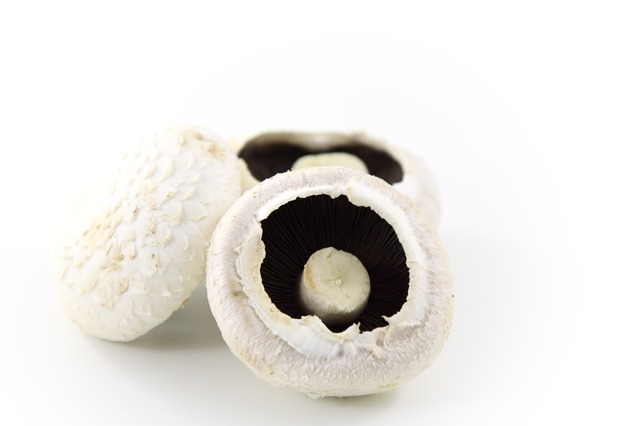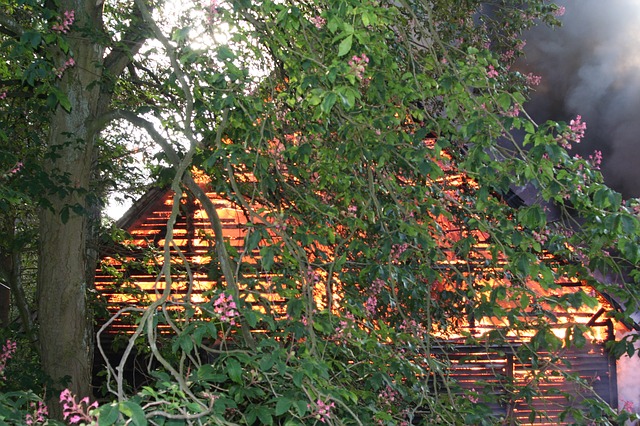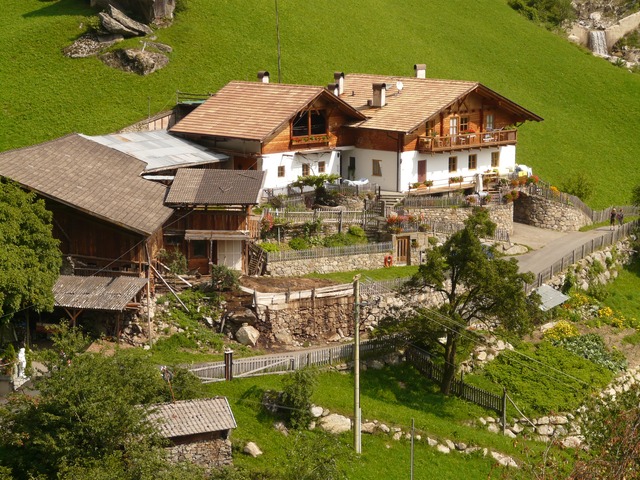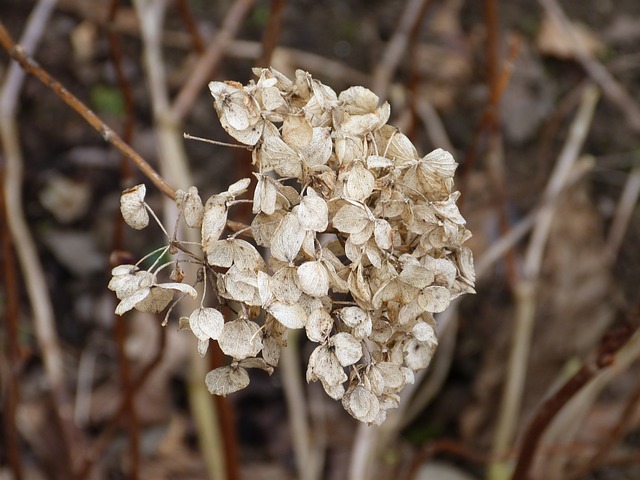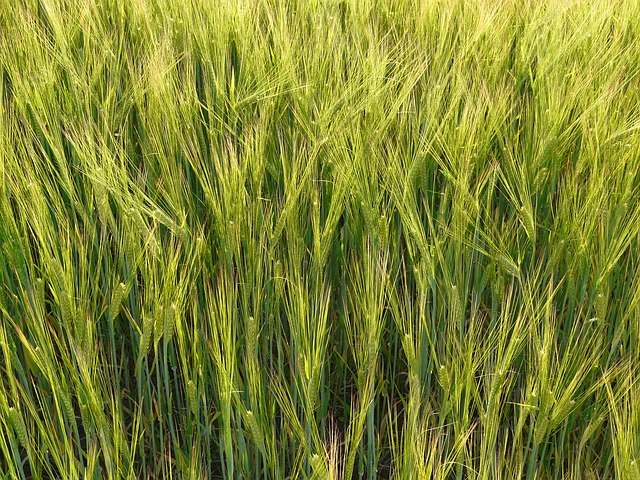يوننان
|
Yunnan Province
云南省
| |
|---|---|
Province | |
| الكتابة بـName | |
| • Chinese | 云南省 (Yúnnán Shěng) |
| • Abbreviation | YN / 滇 (Diān) or 云/雲 (Yún) |
|
Views of Honghe Hani Rice Terraces
| |
|
Map showing the location of Yunnan Province
| |
| الإحداثيات: Coordinates: | |
| Capital (and largest city) |
Kunming |
| Divisions | 16 prefectures، 129 counties، 1565 townships |
| الحكم | |
| • Secretary | Chen Hao |
| • Governor | Ruan Chengfa |
| المساحة | |
| • الإجمالية | 394٬000 كم² (152٬000 ميل²) |
| ترتيب المساحة | 8th |
| أعلى ارتفاع | 6٬740 m (22٬110 ft) |
| التعداد(2010) | |
| • الإجمالي | 45٬966٬239 |
| • الترتيب | 12th |
| • الكثافة | 120/km2 (300/sq mi) |
| • ترتيب الكثافة | 24th |
| Demographics | |
| • Ethnic composition |
|
| • Languages and dialects |
Southwestern Mandarin 25 ethnic minority languages |
| ISO 3166 code | CN-YN |
| GDP (2017) |
CNY 1.65 trillion US$244.84 billion (20th) |
| • per capita |
CNY 34,546 US$5,117 (30th) |
| HDI (2013) | 0.609 (medium) (29th) |
| المسقط الإلكتروني | yn.gov.cn |
| يوننان | |||||||||||||||||||||||||||||||||
|---|---|---|---|---|---|---|---|---|---|---|---|---|---|---|---|---|---|---|---|---|---|---|---|---|---|---|---|---|---|---|---|---|---|
| "Yunnan" in Simplified (top) and Traditional (bottom) Chinese characters | |||||||||||||||||||||||||||||||||
| اسم صيني | |||||||||||||||||||||||||||||||||
| صينية مبسطة | 云南 | ||||||||||||||||||||||||||||||||
| صينية تقليدية | 雲南 | ||||||||||||||||||||||||||||||||
| المعني الحرفي | "South of the Yun(ling Mountains)" | ||||||||||||||||||||||||||||||||
| |||||||||||||||||||||||||||||||||
| اسم Yi | |||||||||||||||||||||||||||||||||
| [[Yi (لغة)|Yi]] | ꒊꆈ yyp nuo |
||||||||||||||||||||||||||||||||
| اسم Dai | |||||||||||||||||||||||||||||||||
| [[Dai (لغة)|Dai]] | ᦑᦱᧃ ᦑᦳᧂ yun nuo |
||||||||||||||||||||||||||||||||
| اسم Lisu | |||||||||||||||||||||||||||||||||
| [[Lisu (لغة)|Lisu]] | ꓬꓱ-ꓠ ye na |
||||||||||||||||||||||||||||||||
| اسم Tibetan | |||||||||||||||||||||||||||||||||
| [[Tibetan (لغة)|Tibetan]] | ཡུན་ནན་ yun nan |
||||||||||||||||||||||||||||||||
| اسم Northern Thai | |||||||||||||||||||||||||||||||||
| [[Northern Thai (لغة)|Northern Thai]] | วิเทหราช Wideharaj |
||||||||||||||||||||||||||||||||
يوننان (الصينية المبسطة: 云南 ) هي إحدى مقاطعات الجنوب الأوسط من الصين. وتقع إلى الجنوب الغربي من البلاد، وتحتل مسقطاً تتصل من خلاله بعدة دول هي: الهند وميانمار (بورما سابقاً) ولاوس، وڤيتنام. The province spans approximately 394,000 kiloمتر مربعs (152,000 ميل2) and has a population of 48.300 million (as of 2018). The capital of the province is Kunming, formerly also known as Yunnan. The province borders the Chinese provinces Guangxi, Guizhou, Sichuan, and the Tibet Autonomous Region, as well as the countries Vietnam, Laos, and Myanmar. Yunnan is China's fourth least developed province based on disposable income per capita in 2014.
Yunnan is situated in a mountainous area, with high elevations in the northwest and low elevations in the southeast. Most of the population lives in the eastern part of the province. In the west, the altitude can vary from the mountain peaks to river valleys by as much as 3,000 مترs (9,800 قدم). Yunnan is rich in natural resources and has the largest diversity of plant life in China. Of the approximately 30,000 species of higher plants in China, Yunnan has perhaps 17,000 or more. Yunnan's reserves of aluminium, lead, zinc and tin are the largest in China, and there are also major reserves of copper and nickel.
The Han Empire first recorded diplomatic relation with the province at the end of the 2nd century BC. The area was controlled by the Sino-Tibetan-speaking kingdom of Nanzhao (738-937), followed by the Bai-ruled Dali Kingdom (937-1253). After the Mongol invasion of the region in the 13th century, Yunnan was conquered by the Ming dynasty.
From the Yuan dynasty onward, the area was part of a central-government sponsored population movement towards the southwestern frontier, with two major waves of migrants arriving from Han-majority areas in northern and southeast China. As with other parts of China's southwest, Japanese occupation in the north during World War II forced another migration of Han people into the region. These two waves of migration contributed to Yunnan being one of the most ethnically diverse provinces of China, with ethnic minorities accounting for about 34 percent of its total population. Major ethnic groups include Yi, Bai, Hani, Zhuang, Dai and Miao. Yunnan Province has also been identified as "the birthplace of tea...the first area where humans figured out that eating tea leaves or brewing a cup could be pleasant."
اجتاحها المنغول في عام 1253، وأصبحت جزء من الصين في القرن 17. عاصمتها كونمينگ. مساحتها 394,100 كم².
التاريخ
This article needs additional citations for verification. (October 2019) (Learn how and when to remove this template message)
|
Prehistory
The Yuanmou Man, a Homo erectus fossil unearthed by railway engineers in the 1960s, has been determined to be the oldest-known hominid fossil in China. By the Neolithic period, there were human settlements in the area of Lake Dian. These people used stone tools and constructed simple wooden structures.
Pre-Nanzhao period
Around the 3rd century BC, the central area of Yunnan around present day Kunming was known as Dian. The Chu general Zhuang Qiao (庄蹻) entered the region from the upper Yangtze River and set himself up as "King of Dian". He and his followers brought into Yunnan an influx of Chinese influence, the start of a long history of migration and cultural expansion.
In 221 BC, Qin Shi Huang unified China and extended his authority south. Commanderies and counties were established in Yunnan. An existing road in Sichuan – the "Five Foot Way" – was extended south to around present day Qujing, in eastern Yunnan. In 109 BC, the Han dynasty invaded Dian during its southern expeditions. Under orders from Emperor Wu, General Guo Chang (郭昌) was sent south to Yunnan, eventually establishing the Yizhou commandery. By this time, agricultural technology in Yunnan had improved markedly. The local people used bronze tools, plows and kept a variety of livestock, including cattle, horses, sheep, goats, pigs and dogs. Anthropologists have determined that these people were related to the people now known as the Tai. They lived in tribal congregations, sometimes led by exiled Chinese.[]
During the Three Kingdoms, the territory of present-day Yunnan, western Guizhou and southern Sichuan was collectively called Nanzhong. The dissolution of Chinese central authority led to increased autonomy for Yunnan and more power for the local tribal structures. In AD 225, the famed statesman Zhuge Liang led three columns into Yunnan to pacify the tribes. His seven captures of Meng Huo, a local magnate, is mythologized in the Romance of the Three Kingdoms.
In the 4th century, northern China was largely overrun by nomadic tribes from the north. In the 320s, the Cuan (爨) clan migrated into Yunnan. Cuan Chen (爨琛) named himself king and held authority from Lake Dian, then known as Kunchuan. Henceforth the Cuan clan ruled eastern Yunnan for over four hundred years.
International trade flowed by din of Yunnan. An ancient overland pre-Tang trade route from Yunan Province passed through Irrawaddy in Burma to reach Bengal. Yunan was inhabited by so-called barbarians not fully under the control of the T'ang government and the route, though ancient, was not used much in pre-Tang times, and Chinese attempts to control the route were disrupted by the rise of Nanzhao.
Nanzhao period
Yunnan was settled by several local tribes, clans, and cultures before the 8th century. Around Lake Erhai, namely, the Dali area, there emerged six zhao: Mengzi (蒙巂), Yuexi (越析), Langqiong (浪穹), Dengdan (邆赕), Shilling (施浪), and Mengshe (蒙舍). Zhao(诏) was an indigenous non-Chinese language term meaning "king" or "kingdom." Among the six regimes Mengshe was located south of the other five; therefore given the new, larger context, it was called Nanzhao (Southern Kingdom).
By the 730s Nanzhao had succeeded in bringing the Erhai Lake–area under its authority. In 738, the western Yunnan was united by Piluoge, the fourth king of Nanzhao, who was confirmed by the imperial court of the Tang dynasty as king of Yunnan. Ruling from Dali, the thirteen kings of Nanzhao ruled over more than two centuries and played a vital role in the dynamic relationship between the Tang dynasty and the Tibetan Empire as a buffer state.
By the 750s, Nanzhao had conquered Yunnan and became a potential rival to Tang China. The following period saw several conflicts between Tang China and Nanzhao. In 750, Nanzhao attacked and captured Yaozhou, the largest Tang settlement in Yunnan. In 751, Xianyu Zhongtong (鮮于仲通), the regional commander of Jiannan (present-day Sichuan), led a Tang campaign against Nanzhao. The king of Nanzhao, Geluofeng, regarded the previous incident as a personal affair and wrote to Xianyu to seek peace. However, Xianyu Zhongtong detained the Nanzhao envoys and turned down the appeal. Confronted with Tang armies, Nanzhao immediately turned its allegiance to the Tibetan Empire. The Tubo and Nanzhao agreed to be "fraternal states"; Geluofeng was given the titles zanpuzhong ("younger brother"). The Nanzhao-Tubo alliance ensured a disastrous defeat for Xianyu's expedition, with the Tang general's army of 80,000 men being reduced to a quarter of its original size.
Tang China did not give up after one failure. In 753, another expedition was prepared, but this was also defeated by Nanzhao. In 754, the Tang organized an army of more than 100,000 troops that advanced to the Dali plain, resulting in only another slaughter. By the end of the eighth century, Tang was no longer a major threat to Nanzhao.
Nanzhao's expansion lasted for several decades. In 829, Nanzhao suddenly plundered Sichuan and entered Chengdu. When it retreated, hundreds of Sichuan people, including skilled artisans, were taken to Yunnan. In 832, the Nanzhao army captured the capital of the Pyu kingdom in modern upper Burma. Nanzhao also attacked the Khmer peoples of Zhenla. Generally speaking, Nanzhao was then the most powerful kingdom in mainland Southeast Asia, and played an extremely active role in multistate interactions. In 859, Nanzhao captured Bozhou, and this event exacerbated the Nanzhao-Tang clashes. When the Tang governor of Annam took Bozhou back in the following year, Nanzhao, with the help of native peoples, occupied Hanoi as the Tang army moved to Bozhou. When the Tang forces returned, Nanzhao troops retreated from Hanoi but attacked and plundered Yongzhou. In the winter of 862, Nanzhao, allying with local groups, led an army of over 50,000 men to invade Annam again. It is reported that the Tang forces lost over 150,000 soldiers (either killed or captured by Nanzhao) in the two Annam battles. The autumn of 866 saw Tang victory in Hanoi and soon all of the Nanzhao forces were driven away. But Tang China had lost its ability to attack Nanzhao.
While Nanzhao was being defeated in Annam, it still occasionally attacked Sichuan. In 869, Shilong (世隆), the eighth king and the first empire of Nanzhao, invaded Sichuan. In 874, Nanzhao attacked Sichuan again.
In 902, Zheng Maisi, the qingpingguan (清平官,"Prime Minister") of Nanzhao, murdered the infant king of Nanzhao, and established a short-lived regime, namely, Da Chang He. Nanzhao, a once-powerful empire, disappeared.
Dali Kingdom
In 937, Duan Siping overthrew the Nanzhao and established the Dali Kingdom. The kingdom was conquered by the Mongol Empire in 1253 after Dali King Duan Xingzhi defected to the Mongols. The Duans incorporated into the Mongol dominion as Maharajas of the new province. The Mongolian prince sent to administer the region with them was killed. In 1273, Kublai Khan reformed the province and appointed the semu Ajall Shams al-Din Omar as its governor. The Yunnan Province during the Yuan dynasty included significant portions of Upper Burma after the First Mongol invasion of Burma in the 1270s and 1280s. With the fall of the Yuan dynasty in 1368, the Ming dynasty destroyed the Yuan loyalists led by Basalawarmi in the Ming conquest of Yunnan by the early 1380s.
Ming and Qing dynasties
The Ming installed Mu Ying and his family as hereditary aristocrats in Yunnan.
During the Ming and Qing dynasties, large areas of Yunnan were administered under the native chieftain system. Under the Qing dynasty a war with Burma also occurred in the 1760s due to the attempted consolidation of borderlands under local chiefs by both China and Burma.[]
Yunnan was a destination for Han Chinese during Yuan rule. Colonizers moved into the area during Ming and Qing rule.
During the Ming dynasty, ثلاثة million Han Chinese mostly from Nanjing (before the original Nanjing population was largely replaced by Wu speakers) and some from Shanxi and Hebei settled in Yunnan.
Although largely forgotten, the bloody Panthay Rebellion of the Muslim Hui people and other local minorities against the Manchu rulers of the Qing dynasty caused the deaths of up to a million people in Yunnan. The Manchu official Shuxing'a started an anti-Muslim massacre which led to the Panthay Rebellion. Shuxing'a developed a deep hatred of Muslims after an incident where he was stripped naked and nearly lynched by a mob of Muslims. He ordered several Muslim rebels to be slow sliced to death.Tariq Ali wrote about the real incident in one of his novels, claiming the Muslims who had nearly lynched Shuxing'a were not Hui Muslims but belonged to another ethnicity but nevertheless the Manchu official blamed all Muslims for the incident. A British officer testified that the Muslims did not rebel for religious reasons and that the Chinese were tolerant of different religions and were unlikely to have caused the revolt by interfering with the practising of Islam. Loyalist Muslim forces helped Qing crush the rebel Muslims. The Qing armies only massacred Muslims who had rebelled or supported the rebels and spared Muslims who took no part in the uprising.
In 1894, George Ernest Morrison, an Australian correspondent for The Times, traveled from Beijing to British-occupied Burma via Yunnan. His book, An Australian in China, details his experiences.
The 1905 Tibetan Rebellion in which Tibetan Buddhist Lamas attacked and killed French Catholic missionaries spread to Yunnan.
Post-Imperial
Yunnan was transformed by the events of Second Sino Japanese War, which caused many east coast refugees and industrial establishments to relocate to the province. It assumed strategic significance, particularly as the Burma Road from Lashio, in Burma to Kunming was a fought over supply line of vital importance to China's war effort.
University faculty and students in the east had originally decamped to Changsha, capital of Hunan. But as the Japanese forces were gaining more territory they eventually bombed Changsha in February 1938. The 800 faculty and students who were left had to flee and made the 1,000 mile journey to Kunming, capital of Yunnan in China's mountainous southwest. It was here that the National Southwest Associated University (commonly known as Lianda University) was established. For eight years, staff, professors and students had to survive and operate in makeshift quarters that were subject to sporadic bombing campaigns by the Japanese. There were dire shortages of food, equipment, books, clothing and other essential needs, but they managed to conduct the running of a modern university. Over those eight years of war (1937-1945), Lianda became famous nationwide for having and producing many, if not most, of China's most prominent academics, scholars, scientists and intellectuals. Both of China's only Nobel laureates in physics studied at Lianda in Kunming.
Naturalists
Thousands of plant, insect and mammal species were described in the 19th century by scientists of the French National Museum of Natural History, Paris, in connection with permanent settlements of missionaries of the in north-west Yunnan, among them noticeably Jean-André Soulié and Felix Biet. From 1916 to 1917, Roy Chapman Andrews and Yvette Borup Andrews led the Asiatic Zoological Expedition of the American Museum of Natural History through much of western and southern Yunnan, as well as other provinces of China. The book, Camps and Trails in China, records their experiences. Other notable explorers include Heinrich Handel-Mazzetti; George Forrest; Joseph Francis Charles Rock, who from 1922–1949 spent most of his time studying the flora, peoples and languages of southwest China, mainly in Yunnan; and Peter Goullart, a White Russian who studied Naxi culture and lived in Lijiang from 1940 to 1949.
تمرد البانثاي (1856 - 1873)
الجغرافيا
Yunnan is the most southwestern province in China, with the Tropic of Cancer running through its southern part. The province has an area of 394,100 kiloمتر مربعs (4.242×1012 قدم2), 4.1% of the nation's total. The northern part of the province forms part of the Yunnan–Guizhou Plateau. The province borders Guangxi and Guizhou in the east, Sichuan in the north, and the Tibet Autonomous Region in the northwest. It shares a border of 4,060 kiloمترs (13,320,000 قدم) with Myanmar (Kachin and Shan States) in the west, Laos (Luang Namtha, Oudomxay, and Phongsaly Provinces) in the south and Vietnam (Hà Giang, Lào Cai, Lai Châu, and Điện Biên Provinces) in the southeast. For practical purposes, all of Yunnan province falls within the Zomia (region) of Asia.
الجيولوجيا
Yunnan is at the far eastern edge of the Himalayan uplift, and was pushed up in the Pleistocene, primarily in the Middle Pleistocene, although the uplift continues into the present. The eastern part of the province is a limestone plateau with karst topography and unnavigable rivers flowing through deep mountain gorges. The main surface formations of the plateau are the Lower Permian Maokou Formation, characterized by thick limestone deposits, the Lower Permian Qixia Formation, characterised by dolomitic limestones and dolomites, the Upper Permian basalts of the Ermeishan Formation (formerly Omeishan plateau basalts), and the red sandstones, mudstones, siltstones, and conglomerates of the Mesozoic–Paleogene, including the Lufeng Formation and the Lunan Group (Lumeiyi, Xiaotun, and Caijiacong formations). In this area is the noted Stone Forest or Shilin, eroded vertical pinnacles of limestone (Maokou Formation). In the eastern part the rivers generally run eastwards. The western half is characterized by mountain ranges and rivers running north and south.
الإحاثة
- Yunnanozoon – Lower Cambrian possible chordate
- Jingshanosaurus – Early Jurassic long-neck prosauropod dinosaur
المناخ
Yunnan has a generally mild climate with pleasant and fair weather because of the province's location on south-facing mountain slopes, receiving the influence of both the Pacific and Indian oceans, and although the growing period is long, the rugged terrain provides little arable land. See Agriculture in Yunnan. Under the Köppen climate classification, much of the province lies within the subtropical highland (Köppen Cwb) or humid subtropical zone (Cwa), with mild to warm winters, and temperate summers, except in the almost tropical to truly tropical south, where temperatures regularly exceed 30 °م (86 °ف) in the warmer half of the year.In general, January average temperatures range fromثمانية to 17 °م (46 to 63 °ف); July averages vary from 21 to 27 °م (70 to 81 °ف). Average annual rainfall ranges from 600 to 2,300 milliمترs (24 to 91 بوصة), with over half the rain occurring between June and August. The plateau region has moderate temperatures. The western canyon region is hot at the valley bottoms, but there are freezing winds at the mountaintops.
يسود القسم الأعظم لإقليم يونان المناخ الموسمي شبه المداري، أما القسم الجنوبي من الإقليم فيسوده المناخ المداري. وتراوح درجة الحرارة لشهر كانون الثاني/يناير في الأحواض والأودية بين 8-16 ْم، ودرجة الحرارة لشهر تموز/يوليوبين 20ـ28 ْم. وضمن هذا الواقع المناخي يراوح معدل كمية الهطل السنوية على الأودية والأحواض بين 1000 - 2000مم، ويرتفع في الجبال ليصل إلى أكثر من 3000 مم. وقد أدى ذلك الوضع الجيولوجي والمناخي لإقليم يونان إلى تشكيل مجموعة من الأنهار أهمها: نهر يانگتسي ونهر الميكونگ والنهر الأحمر والنهر الأسود.
الطبوغرافيا
تحد المقاطعة فيتنام ولاوس وميانمار، ومقاطعتي سيتشوان وگويجو، بالإضافة إلى منطقتي گوانگشي والتبت ذاتيتي الحكم. عدد سكانها 42,300,000 نسمة، وتعد عرقيات السكان فيها من أكثر سكان الصين امتزاجاً لوجود أكثر من 20 قومية. المنطقة جبلية بشكل عام، وخصوصاً في جهتي الشمال والغرب. يمر خلالها ثلاثة أنظمة نهرية: اليانگتزيه والميكونگ والسالوين، وهومصدر لنهرين آخرين هما شي ويوان. جزء من المقاطعة تم احتلاله من قبل القوات اليابانية إبان الحرب العالمية الثانية.
يقع إقليم يونان في منطقة جبلية، ويبلغ متوسط الارتفاع فيه نحو1000-2500م، ويصل في بعض الأماكن إلى ازدياد يزيد على 5000م. ويحتل الجزء الغربي من الإقليم مساحة واسعة من إقليم التبت، الذي يُشكل جزءاً من هضبة التبت، كما تحيط بجبال يونان الأنطقيم الجبلية لميانمار ولاوس وڤيتنام. وتشغل قسمها الأوسط صخور متحولة قديمة، في حين تغطي السطح في الأجزاء الشرقية والغربية الصخور الرسوبية التي تعود إلى الحقبة الأولى. أما السفوح الجبلية فتبترها أودية عميقة وخاصة في القسم الغربي من الإقليم حيث يراوح عمق الأودية النهرية 1000 - 2000م. كما يبتر هذه السلاسل الكثير من الفوالق والصدوع التي تحدد في كثير من الأحيان امتداد السلاسل الجبلية، وتشكل جبال القسم الغربي من الإقليم استمراراً لهضبة التبت، ويتحول امتداد السلاسل الجبلية الرئيسة هنا من امتداد طولي حسب خطوط الطول إلى اتجاه جنوبي شرقي. وتشاهد المظاهر الكارستية في كثير من الأماكن، وغالباً ما تجري الأنهار في إقليم يونان ضمن أودية عميقة، وتغطي الغابات مساحات كبيرة من الجبال حيث تتشكل الغابات المكونة من الأشجار متساقطة الأوراق في المناطق الشمالية من الإقليم (تغطي 18% من مساحة الإقليم الشمالي)، في حين تسود الغابات دائمة الخضرة على ازدياد 1500م، وتسود في الجنوب والجنوب الغربي الغابات الجبلية شبه المدارية، وتنتشر في أعلى القمم الجبلية الغابات متساقطة الأوراق ذات الأوراق العريضة والغابات المخروطية. وتعد الأحواض مابين الجبال أفضل الأماكن لتمركز السكان.
Borders
Bordering Chinese provincial-level divisions are Tibet, Sichuan, Guizhou and Guangxi. Starting from the east and working clockwise, bordering countries are Vietnam (Hà Giang, Lào Cai, Lai Châu and Điện Biên provinces), Laos (Phongsaly, Oudomxay and Luang Namtha provinces), Myanmar (states of Shan and Kachin). The main border crossings are:
- Hekou–Lào Cai, by road and rail, is the only Sino-Vietnamese land border crossing open to non-Chinese/non-Vietnamese.
- Sino-Laotian at Boten
- Ruili–Muse is the only Sino-Burmese border crossing open to non-Chinese/non-Burmese.
Lakes
There are several major lakes in Yunnan. The province has nine lakes with areas of over 30 kiloمتر مربعs (320,000,000 قدم2). They include:
- Dianchi Lake, near Kunming
- Fuxian Lake, in Yuxi, the second deepest lake in China
- Xingyun Lake, directly south of Fuxian Lake and connected with it by a short river
- Qilu Lake, south of Fuxian and Xingyun Lakes, separated from them by mountains, in Tonghai County
- Erhai Lake, near Dali City
- Lugu Lake, in Ninglang near the border with Sichuan
- Yangzong Lake, in Yiliang County
- Yilong Lake
Rivers
Yunnan is the source of two rivers, the Xi River (there known as the Nanpan and Hongshui) and the Yuan River. The Hongshui is a principal source stream of the Xi River. Rising as the Nanpan in eastern Yunnan province, it flows south and east to form part of the boundary between Guizhou province and Guangxi autonomous region. Flowing for 345 kم (1,132,000 قدم), it unites with the Yu River at Guiping to form what eventually becomes the Xi River.
The province is drained by six major river systems:
- the Yangtze River, here known as the Jinsha Jiang (River of Golden Sands), drains the province's north.
- the Pearl River, with its source near Qujing, collects the waters from the east.
- the Mekong (Lancang), which flows from Tibet into the South China Sea forming the boundaries between Laos and Burma, between Laos and Thailand and through Laos, Cambodia and Vietnam
- the Red River (Yuan or Honghe) has its source in the mountains south of Dali and enters the South China Sea through Hanoi, Vietnam
- the Salween (Nujiang), which flows into the Gulf of Martaban and the Andaman Sea through Burma
- the Irrawaddy, which arises from the confluence of two rivers in Kachin State in Burma, has a few small tributaries in Yunnan's far west, such as the Dulongjiang and Taping River, and rivers in the prefecture of Dehong.
Biodiversity
Yunnan is China's most diverse province, biologically as well as culturally. The province contains snow-capped mountains and true tropical environments, thus supporting an unusually full spectrum of species and vegetation types. The Yunnan camellia (Camellia reticulata) is the provincial emblem.[]
During summer, the Great Plateau of Tibet acts as a barrier to monsoon winds, trapping moisture in the province. This gives the alpine flora in particular what one source has called a "lushness found nowhere else".
This topographic range combined with a tropical moisture sustains extremely high biodiversity and high degrees of endemism, probably the richest botanically in the world's temperate regions. Perhaps 17,000 species of higher plants, of which an estimated 2,500 are endemic, can be found in the province. The province is said to have "as much flowering plant diversity as the rest of the Northern Hemisphere put together".
Yunnan has less than 4% of the land of China, yet the province harbors around 42.6% of all protected planet species and 72.5% of all protected wild animals in the county, of which 15% are strictly endemic to Yunnan. Yunnan is home to, most notably, the southeast Asian gaur, a giant forest-dwelling bovine, the Indochinese tiger and the Asian elephant. Other extremely rare species are the Yunnan box turtle and the Yunnan snub-nosed monkey. It is feared that the Yunnan lar gibbon, another moribund species, has already gone extinct.
The freshwater fish fauna is highly diverse with about 620 species, including more than 580 natives (the remaining are introduced). This equals almost 40% of the freshwater fish species in China. Of the Yunnan natives, more than 250 are endemic to the province and many of these are threatened. Several species that are restricted to single lakes (notably Dian, Erhai, Fuxian and Yilong) are likely already are extinct. By far, the most diverse order in Yunnan are Cypriniformes; both in total species number and number of endemics.
Designation
Yunnan has been designated a:
- "Center of Plant Diversity" (IUCN/WWF: Davis et al. 1995)
- "Global 200 List Priority Ecoregion" for biodiversity conservation (WWF: Olsen and Dinerstein 1998)
- "Endemic Bird Area" (Birdlife International: Bibby, C. et al. 1992) and
- "Global Biodiversity Hotspot," as a part of the Hengduan Mountain Ecosystem (Conservation International: Mittermeier and Mittermeier 1997)
Natural resources
A main source of wealth lies in its vast mineral resources; indeed, mining is the leading industry in Yunnan. Yunnan has proven deposits of 86 kinds of minerals in 2,700 places. Some 13% of the proved deposits of minerals are the largest of their kind in China, and two-thirds of the deposits are among the largest of their kind in the Yangtze River valley and in south China. Yunnan ranks first in the country in deposits of zinc, lead, tin, cadmium, indium, thallium and crocidolite. Other deposits include iron, coal, copper, gold, mercury, silver, antimony and sulfur. More than 150 kinds of minerals have been discovered in the province. The potential value of the proven deposits in Yunnan is ثلاثة trillion yuan, 40% of which come from fuel minerals, 7.3% from metallic minerals and 52.7% from nonmetallic minerals.
Yunnan has sufficient rainfall and many rivers and lakes. The annual water flow originating in the province is 200 cubic kilometres, three times that of the Yellow River. The rivers flowing into the province from outside add 160 cubic kilometres, which means there are more than ten thousand cubic metres of water for each person in the province. This is four times the average in the country. The rich water resources offer abundant hydro-energy. China is constructing a series of dams on the Mekong to develop it as a waterway and source of power; the first was completed at Manwan in 1993.
Drought
After four years of drought, in the fall of 2012, winter of 2012-13, and spring of 2013 severe drought was reported which affected flow of springs and the level of spring-fed lakes; agriculture and urban water supplies were also affected. Water levels in Yilong Lake dropped and grass was reported growing in the middle of the lake bed.
الموارد الطبيعية
تعهد المقاطعة اليوم بإنتاجها الزراعي، وبالأخص الأرز، كما يوجد بها صناعة تعدين واسعة.
تتميز المناطق الجنوبية من إقليم يونان بغناها بالموارد الطبيعة والمواد الأولية والطاقة الكهرمائية والموضوعع الجبلية، وتتمركز في منطقة گاتسايهوGatsaiho أكبر المنشآت الغذائية في الصين والمتمثلة بمعامل تحضير الزيوت، ويستخرج في جنوبي الإقليم نصف إنتاج النحاس في الصين، وتوجد أكبر مناطق إنتاجه في ضواحي مدينة هونگتشي Hongchi، ويستخرج من الجنوب أيضاً خامات الحديد والكوبالت والفضة والزنك والزئبق والرصاص والبوكسيت، كما يوجد الانتيموان والفولفروم وفحم الأباتيت والرخام. وتتمركز في إقليم يونان مجموعة من المعامل والمصانع الثقيلة يأتي في مقدمتها مصانع صهر الحديد والمعامل الكيميائية ومصانع الآليات والمكنات واستخراج الفوسفور والصناعات الجلدية والميكانيكية وصناعة الإسمنت والصناعات الخشبية والغذائية وتحضير ورق الشاي للاستخدام والتصدير، وصنع الخمور والزيوت والزبدة ومعامل السكر، وتعد مدينة كونمينگ المركز الصناعي الأول في الإقليم.
يعمل القسم الأكبر من سكان يونان في الأعمال الزراعية وملحقاتها، وبسبب سيادة التضاريس الجبلية لا يستخدم من الأراضي في الأعمال الزراعية أكثر من 6% من مساحة الإقليم العامة. يغرس الرز في المنخفضات والأودية النهرية، كما يغرس فيها القمح والشعير، أما على السفوح الجبلية فتسود زراعة الذرة. أما بالنسبة إلى الزراعات الصناعية فتأتي في مقدمتها زراعة قصب السكر والتبغ والشاي والألياف الصناعية والنباتات الزيتية، ويغرس البن في أطراف الإقليم الجنوبية، كما تغرس الكينا وأشجار المطاط والنخيل وجوز الهند وأشجار التوت.
كما تقوم في المناطق الجنوبية والشرقية للإقليم عمليات إعداد الأخشاب وتحضيرها من الغابات، ويأتي على رأسها أخشاب الأرز والبوميلو.
وقد أقيم على أراضي الإقليم في عام 1964 أبرز طريق سكة حديد تربط الإقليم بميانمار وإقليم سيتشوان.
الديمغرافيا
| Historical population | ||
|---|---|---|
| السنة | تعداد | ±% |
| 1912 | 9٬468٬000 | — |
| 1928 | 13٬821٬000 | +46.0% |
| 1936-37 | 12٬042٬000 | −12.9% |
| 1947 | 9٬066٬000 | −24.7% |
| 1954 | 17٬472٬737 | +92.7% |
| 1964 | 20٬509٬525 | +17.4% |
| 1982 | 32٬553٬817 | +58.7% |
| 1990 | 36٬972٬610 | +13.6% |
| 2000 | 42٬360٬089 | +14.6% |
| 2010 | 45٬966٬239 | +8.5% |
Ethnicity
Yunnan is noted for a very high level of ethnic diversity. It has the highest number of ethnic groups among the provinces and autonomous regions in China. Among the country's 56 recognised ethnic groups, twenty-five are found in Yunnan. Some 38% of the province population are members of ethnic minorities, including the Yi, Bai, Hani, Tai, Dai, Miao, Lisu, Hui, Lahu, Wa, Nakhi, Yao, Tibetans, Jingpo, Blang, Pumi, Nu, Achang, Jinuo, Mongols, Derung, Manchus, Sui, and Buyei. Several other groups are represented, but they live neither in compact settlements nor do they reach the required threshold of five thousand to be awarded the official status of being present in the province. Some groups, such as the Mosuo, who are officially recognised as part of the Naxi, have in the past claimed official status as a national minority, and are now recognised with the status of Mosuo people.
Ethnic groups are widely distributed in the province. Some twenty-five minorities live in compact communities, each of which has a population of more than five thousand. Ten ethnic minorities living in border areas and river valleys include the Hui, Manchus, Bai, Naxi, Mongols, Zhuang, Dai, Achang, Buyei and Shui, with a combined population of 4.5 million; those in low mountainous areas are the Hani, Yao, Lahu, Va, Jingpo, Blang and Jino, with a combined population ofخمسة million; and those in high mountainous areas are Miao, Lisu, Tibetan, Pumi and Drung, with a total population of four million.
Languages
Most dialects of the Chinese language spoken in Yunnan belong to the southwestern subdivision of the Mandarin group, and are therefore very similar to the dialects of neighbouring Sichuan and Guizhou provinces. Notable features found in many Yunnan dialects include the partial or complete loss of distinction between finals /n/ and /ŋ/, as well as the lack of /y/. In addition to the local dialects, most people also speak Standard Chinese (Putonghua, commonly called "Mandarin"), which is used in the media, by the government, and as the language of instruction in education.
Yunnan's ethnic diversity is reflected in its linguistic diversity. Languages spoken in Yunnan include Tibeto-Burman languages such as Bai, Yi, Tibetan, Hani, Jingpo, Lisu, Lahu, Naxi; Tai languages like Zhuang, Bouyei, Dong, Shui, Tai Lü and Tai Nüa; as well as Hmong–Mien languages.
The Naxi, in particular, use the Dongba script, which is the only pictographic writing system in use in the world today. The Dongba script was mainly used to provide the Dongba priests with instructions on how to carry out their rituals: today the Dongba script features more as a tourist attraction. Perhaps the best known Western Dongba scholar was Joseph Rock.
Literacy
By the end of 1998, among the province's population, 419,800 had received college education or above, 2.11 million, senior middle school education, 8.3 million, junior middle school education, 18.25 million, primary school education, and 8.25 million aged 15 or above, illiterate or semi-literate.
Religion
Religion in Yunnan (2005)██ Chinese religions, ethnic minorities' folk religions, or not religious (91.3%)██ Buddhism (6%)██ Islam (1.4%)██ Christianity (1.3%)
According to a demographic analysis of religions in Yunnan, as of 2005 the province has around أربعة million believers of the five government-sanctioned organised religious doctrines of China, almost 90% of them belonging to the ethnic minorities. Of these:
- 2.6 million or about 6% of the total population are Buddhists;
- 620,000 or 1.4% are Muslims;
- 530,000 or 1.2% are Protestants;
- 240,000 or 0.5% are Taoists (note that "Taoist" traditionally only defines priests);
- 66,000 or 0.1% are Catholics.
According to surveys conducted in 2004 and 2007, in those years approximately 32.22% of the province's population was involved in worship of ancestors and 2.75% declared a Christian identity.
Most of the population of the province practices traditional indigenous religions including the Chinese folk religion among the Han Chinese, Bimoism among the Yi peoples and Benzhuism among the Bai people. The Dai people are one of the few ethnic minorities of China that traditionally follow the Theravada branch of Buddhism. Most of the Hui people of the region are Muslims. Christianity is dominant among the Lisu, the Jingpo and the Derung ethnic groups.
|
|---|
Agriculture
The region maintains a strong agricultural focus. Agriculture is restricted to the few upland plains, open valleys, and terraced hillsides. Level land for agriculture is extremely scarce and only aboutخمسة percent of the province is under cultivation. Rice is the main crop; corn, barley, wheat, rapeseed, sweet potatoes, soybeans (as a food crop), tea, sugarcane, tobacco, and cotton are also grown. On the steep slopes in the west livestock is raised and timber, a valuable resource, is cut (teak in the southwest).
Yunnan produces most of coffee grown in China (although there are also much smaller plantations in Fujian and Hainan. Large-scale coffee cultivation started in Yunnan in 1988. The most commonly grown variety in the province is catimor.
Tobacco is the main (export) product and makes up a big part of the provincial GDP. Furthermore, Yunnan has a strong competitive potential in the fruit and vegetable industries, especially in low value-added commodities such as fresh and dried vegetables and fresh apples.
Yunnan is one of the regions in the world with the most abundant resources of wild edible mushrooms. In China, there are 938 kinds of edible mushrooms, and over 800 varieties can be found in Yunnan. In 2004, around 7,744 tons of wild edible mushrooms were exported, making up for 70% of the total export of this product in China. The so-called 'pine mushroom' is the main product in Yunnan and is exported to Japan in large quantities.
Due to China's growing consumption of dairy products, Yunnan's dairy industry is also developing very rapidly and is also aiming to export to its ASEAN neighbors.
The flower industry in Yunnan province started to develop towards the end of the 1980s. Yunnan province accounts for 50% of China's total cut flower production. The size of the planting area for cut flowers in Yunnan province amounts to 4000 hectares. In 2003, the output totaled 2.3 billion stems. In 2002 the flower industry in Yunnan had a total output of RMB 3.4 billion. Export amounted to US$18 million. Apart from sales on the domestic market, Yunnan also exports to a number of foreign countries and regions such as Japan, Korea, Hong Kong, Thailand and Singapore.[]
الحوكمة
الأقسام الإدارية
تتكون يوننان من ستة عشر تقسيماً بمستوى محافظة:
| الخريطة | # | الاسم | هانزي | هانيوپنين | النوع |
|---|---|---|---|---|---|
| 1 | كونمنگ | 昆明市 | Kūnmíng Shì | مدينة بمستوى محافظة | |
| 2 | Qujing | 曲靖市 | Qǔjìng Shì | مدينة بمستوى محافظة | |
| 3 | يوشي | 玉溪市 | Yùxī Shì | مدينة بمستوى محافظة | |
| 4 | باوشان | 保山市 | Bǎoshān Shì | مدينة بمستوى محافظة | |
| 5 | ژاوتونگ | 昭通市 | Zhāotōng Shì | مدينة بمستوى محافظة | |
| 6 | Lijiang | 丽江市 | Lìjiāng Shì | مدينة بمستوى محافظة | |
| 7 | پوئر | 普洱市 | Qǔjìng Shì | مدينة بمستوى محافظة | |
| 8 | Lincang | 临沧市 | Líncāng Shì | مدينة بمستوى محافظة | |
| 9 | Dehong (Dai & Jingpo) | 德宏傣族景颇族自治州 | Déhóng Dǎizú Jǐngpōzú Zìzhìzhōu | Autonomous prefecture | |
| 10 | نوجيانگ (Lisu) | 怒江傈僳族自治州 | Nùjiāng Lìsùzú Zìzhìzhōu | Autonomous prefecture | |
| 11 | Diqing (Tibetan) | 迪庆藏族自治州 | Díqìng Zàngzú Zìzhìzhōu | Autonomous prefecture | |
| 12 | Dali (Bai) | 大理白族自治州 | Dàlǐ Báizú Zìzhìzhōu | Autonomous prefecture | |
| 13 | Chuxiong (Yi) | 楚雄彝族自治州 | Chǔxióng Yízú Zìzhìzhōu | Autonomous prefecture | |
| 14 | Honghe (Hani & Yi) | 红河哈尼族彝族自治州 | Hónghé Hānízú Yízú Zìzhìzhōu | Autonomous prefecture | |
| 15 | Wenshan (Zhuang & Miao) | 文山壮族苗族自治州 | Wénshān Zhuàngzú Miáozú Zìzhìzhōu | Autonomous prefecture | |
| 16 | Xishuangbanna (Dai) | 西双版纳傣族自治州 | Xīshuāngbǎnnà Dǎizú Zìzhìzhōu | Autonomous prefecture |
Of those 16 prefecture-level divisions, Yunnan has 129 county-level divisions, and 1455 township-level divisions.
السياسة
أمناء لجنة يوننان في الحزب الشيوعي الصيني: أمين الحزب هوأعلى وأهم منصب في يوننان.
- Song Renqiong (宋任穷): 1950-1952
- Xie Fuzhi (谢富治): July 1952-August 1959
- Yan Hongyan (阎红彦): August 1959-January 1967
- Zhou Xing (周兴): June 1971-October 1975
- Jia Qiyun (贾启允): October 1975-February 1977
- An Pingsheng (安平生): February 1977-July 1985
- Pu Chaozhu (普朝柱): July 1985-June 1995
- Gao Yan (高严): June 1995-August 1997
- Linghu An (令狐安): August 1997-October 2001
- Bai Enpei (白恩培): October 2001 - incumbent
حكام يوننان: The Governor is the second highest office in Yunnan, after the Secretary of the CPC Yunnan Committee. The Governor, who is elected by the Yunnan Provincial People's Congress, is responsible for all economic, environmental, political, personnel and foreign affairs issues concerning Yunnan.
- Chen Geng (陈赓): March 1950-February 1955
- Guo Yingqiu (郭影秋): February 1955-November 1958
- Ding Yichuan (丁一川): November 1958-January 1965
- Zhou Xing (周兴): January 1965-1966
- Tan Furen (谭甫仁): August 1968-October 1970
- Zhou Xing: October 1970-October 1975
- Jia Qiyun (贾启允): October 1975-February 1977
- An Pingsheng (安平生): February 1977-December 1979
- Liu Minghui (刘明辉): December 1979-April 1983
- Pu Chaozhu (普朝柱): April 1983-August 1985
- He Zhiqiang (和志强): August 1985-January 1998
- Li Jiating (李嘉廷): January 1998-June 2001
- Xu Rongkai (徐荣凯): June 2001- November 2006
- Qin Guangrong (秦光荣): January 2007 -incumbent
أشهر المدن
الاقتصاد
As of the mid-19th century, Yunnan exported birds, brass, tin, gemstones, musk, nuts, and peacock feathers mainly to stores in Guangzhou. They imported silk, wool, and cotton cloth, tobacco and books.
Yunnan is one of China's relatively undeveloped provinces with more poverty-stricken counties than the other provinces. In 1994, aboutسبعة million people lived below the poverty line of less than an annual average income of 300 yuan per capita. They were distributed in the province's 73 counties mainly and financially supported by the central government. With an input of 3.15 billion yuan in 2002, the absolutely poor rural population in the province has been reduced from 4.05 million in 2000 to 2.86 million. The poverty alleviation plan includes five large projects aimed at improving infrastructure facilities. They involve planned attempts at soil improvement, water conservation, electric power, roads, and "green belt" building. Upon the completion of the projects, the province hopes this will alleviate the shortages of grain, water, electric power and roads.
Yunnan lags behind the east coast of China in relation to socio-economic development. However, because of its geographic location the province has comparative advantages in regional and border trade with countries in southeast Asia. The Lancang River (upper reaches of Mekong River) is the waterway to southeast Asia. In recent years land transportation has been improved to strengthen economic and trade co-operation among countries in the Greater Mekong Subregion. Yunnan's abundance in resources determines that the province's pillar industries are: agriculture, tobacco, mining, hydro-electric power, and tourism. In general, the province still depends on the natural resources. Secondary industry is currently the largest industrial tier in Yunnan, contributing more than 45 percent of GDP. Tertiary industry contributes 40 percent and agriculture 15 percent. Investment is the key driver of Yunnan's economic growth, especially in construction.
The main challenge that Yunnan faces is its lack of major development. Its low productivity and competitiveness restrict the rapid development of the province. The province also faces great challenges in social issues such as environmental protection, poverty elimination, illegal migration, drug trafficking and HIV/AIDS.
Yunnan's four pillar industries include tobacco, agriculture/biology, mining, and tourism. The main manufacturing industries are iron and steel production and copper-smelting, commercial vehicles, chemicals, fertilizers, textiles, and optical instruments. Yunnan has trade contacts with more than seventy countries and regions in the world. Yunnan established the Muse border trade zone (located in Ruili) along its border with Burma. Yunnan mainly exports tobacco, machinery and electrical equipment, chemical and agricultural products, and non-ferrous metals. In 2008, its total two-way trade (imports and exports) reached US$9.6 billion. The province signed foreign direct investment contracts involving US$1.69 billion, of which US$777 million were actually utilized during the year. Yunnan's unemployment rate at the end of 2008 was 4.21%.
Yunnan's nominal GDP in 2011 was 875.1 billion yuan (US$138.92 billion), an annual growth rate of 13.7%. Its per capita GDP was 13,494 yuan (US$1,975). The share of GDP of Yunnan's primary, secondary, and tertiary industries were 17.9%, 43%, and 39.1% respectively.
Yunnan is one of the major production bases of copper, lead, zinc, tin and aluminum in China. Gejiu is well known as "the Kingdom of Zinc" with the reserves ranked first in the country. The Yunxi brand refined tin is one of the main products in Gejiu, which is registered on the London Metal Exchange (LME). Besides, reserves of germanium, indium, zirconium, platinum, rock salt, sylvite, nickel, phosphate, mirabilite, arsenic and blue asbestos are also high. Significant copper deposits are found at Dongchuan, iron ore at Wuding, and coal at Xuanwei and Kaiyuan. Economic policy to locate new industry in interior areas with substantial mineral wealth, led to major industrial development in Yunnan, especially in the Kunming area.
The electricity industry is another important economic pillar of Yunnan, which plays a key role in the "West-East Electricity Transmission Project". The electricity produced in Yunnan is mainly transported to Guangdong.
Economic and Technological Development Zones
- Kunming Economic and Technological Development Zone
First established in 1992, Kunming Economic & Technology Development Zone is a national-level zone approved by the State Council. Kunming is located in east-central Yunnan province with preferential location. After several years' development, the zone has formed its pillar industries, which include tobacco processing, machinery manufacturing, electronic information, and biotechnology.
The Kunming High-tech Industrial Development Zone (KMHNZ), is a state-level high-tech industrial zone established in 1992 in Northwest Kunming. It is administratively under Kunming Prefecture. It has covers an area of 9 kم2 (97,000,000 قدم2). KMHNZ is located in the northwest part of Kunming city, أربعة kilometers from Kunming Railway Station,خمسة kilometers from Kunming International Airport.
- Kunming Dianchi Tourism & Vacation Zone
- Kunming Airport Economic Zone
- Ruili Border Trade Economic Cooperation Zone
Ruili Border Economic Cooperation Zone (RLBECZ) is a Chinese State Council-approved Industrial Park based in Ruili, Dehong Prefecture, founded in 1992 and was established to promote trade between China and Burma. The area's import and export trade include the processing industry, local agriculture and biological resources are very promising. Sino-Burmese business is growing fast. Burma is now one of Yunnan's biggest foreign trade partners. In 1999, Sino-Burmese trade accounted for 77.4% of Yunnan's foreign trade. In the same year, exports for electromechanical equipments came up to US$55.28 million. Main exports here include fiber cloth, cotton yarn, ceresin wax, mechanical equipments, fruits, rice seeds, fiber yarn and tobacco.
- Wanding Border Economic Cooperation Zone
Wanding Border Economic Cooperation Zone (WTBECZ) is a Chinese State Council-approved Industrial Park based in Wanding Town, Ruili, Dehong, founded in 1992 and was established to promote trade between China and Burma. The zone spans 6 kم2 (65,000,000 قدم2) and is focuses on developing trading, processing, agriculture resources and tourism.
- Qujing Economic and Technological Development Zone
Qujing Economic and Technological Development Zone (QETDZ) is a provincial development zone approved by Yunnan Provincial Government in August 1992. It is located in the east of urban Qujing, the second largest city in Yunnan in terms of economic strengths. The location of the development zone is the economic, political and cultural center of Qujing. As an agency under Qujing municipal Party committee and municipal government, the administrative commission of QETDZ functions as an economy supervising body at the prefecture level and an administration body at the county level. It has 106 kم2 (1.14×109 قدم2) under its jurisdiction. It shoulders the task of building a new 40-square-kilometer city area and providing service for a population of 400,000 in the upcomingعشرة years.
- Yuxi Economic and Technological Development Zone
- Dali Economic and Technological Development Zone
- Chuxiong Economic and Technological Development Zone
Chuxiong Economic Development Zone is an important zone in Yunnan. Now the zone has attracted a number of investment projects. It is an important industry for the development of new-type industry platform. The zone covers an area of 12 kم2 (130,000,000 قدم2), composed of four parks.
- Songming Yanglin Experimental Zone for County & Township Industries
- Hekou Border Economic Cooperation Zone
First established in 1992, Hekou Border Economic Cooperation Zone is a border zone approved by State Council to promote Sino-Vietnamese trade. It has a planned area of 4.02 kم2 (43,300,000 قدم2). The zone implemented several policies to serve its clients in China from various industries and sectors including investment, trade, finance, taxation, immigration, etc.
- Jiegao Border Trade Economic Zone
- Lijiang Yulong Snow Mountain Tourism Zone
- Cang Mountain & Erhai Lake Tourism and Vacation Zone at Dali
- Xishuangbanna Tourism and Vacation Zone
- Tengchong Tourism and Vacation Zone
- Yangzonghai Lake Tourism and Vacation Zone
- Fuxian Lake Tourism and Vacation Zone
المؤشرات الاقتصادية الرئيسية
| الوصف | 2005 | 2006 | 2007 |
|---|---|---|---|
| Nominal Gross Domestic Product (RMB 100 million) | 3,472.9 | 4,006.7 | 4,721.8 |
| Real Gross Domestic Product Growth (%) | 9.0 | 11.9 | 12.3 |
| Urban Per Capita Annual Disposable Income (RMB) | 9,265.9 | 10,069.9 | 11,496.0 |
| Rural Per Capita Net Income (RMB) | 2,041.8 | 2,250.5 | 2,600.0 |
| Consumer Price Index (Same period of preceding year=100) | 101.4 | 101.9 | 105.9 |
| Retail Sales of سلع استهلاكية (RMB 100 million) | 1,034.4 | 1,188.9 | 1,394.5 |
| Year-on-year Growth (%) | 13.0 | 14.9 | 17.3 |
| Value-Added of Industry above Designated Size (RMB 100 million) | 998.8 | 1,271.5 | 1,700.0 |
| Year-on-year Growth (%) | 13.3 | 27.3 | 17.0 |
| City, County and Above Investment in Fixed Assets (RMB 100 million) | 1,592.3 | 1,924.1 | 2,798.9 |
| Year-on-year Growth (%) | 43.1 | 20.8 | 26.1 |
| Value of Exports (USD 100 million) | 23.9 | 30.6 | 47.4 |
| Year-on-year Growth (%) | 18.1 | 28.3 | 39.6 |
| قيمة الواردات (USD 100 million) | 26.1 | 33.2 | 40.4 |
| Year-on-year Growth (%) | 52.3 | 27.1 | 42.7 |
| Utilised Foreign Direct Investment (USD 100 million) | 1.9 | 3.0 | 5.0 |
Ref: Yunnan Statistics Bureau http://www.stats.yn.gov.cn/
- 2005 Composition of GDP (%)
- Primary: 18.9
- Secondary: 41.7
- Industry: 34.6
- Tertiary: 39.4
- 2005 Output Share of Leading Industry Groups (% share of gross industrial output)
- Tobacco production: 26.4
- Smelting and pressing of non ferrous metals: 12.8
- Production and supply of electric power and heat: 11.6
- Smelting and pressing of ferrous metals: 10.4
- Raw chemical materials and chemical products: 9.7
- Agricultural non staple food, food and beverage: 5.6
- 2005 Composition of Per Capita Expenditure of Urban Household (%)
- Food: 42.4
- Clothing: 9.5
- Household articles: 4.4
- Medicine & medical services: 9.1
- Transportation & communications: 12.9
- Recreation, cultural & education: 10.6
- Housing & utilities: 8.7
Culture
Yunnan's cultural life is one of remarkable diversity. Archaeological findings have unearthed sacred burial structures holding elegant bronzes in Jinning, south of Kunming. In northeastern Yunnan, frescoes of the Jin dynasty (265–420) have been discovered in the city of Zhatong. Many Chinese cultural relics have been discovered in later periods. The lineage of tribal way of life of the indigenous peoples persisted uninfluenced by modernity until the mid-20th century. Tribal traditions, such as Yi slaveholding and Wa headhunting, have since been abolished. After the Cultural Revolution (1966–76), in which several minority cultural and religious practices were suppressed, Yunnan has come to celebrate its cultural diversity and subsequently many local customs and festivals have flourished.
Eighteen Oddities of Yunnan
Cuisine
Tea
Yunnan has several different tea growing regions. One of Yunnan's best known products is Pu-erh tea (or Puer), named after the old tea trading town of Pu-erh (Puer). The province is also known for its Yunnan Gold and other Dianhong teas, developed in the 20th century.
Music
Chinese medicine
Yunnan is host to 15,000 species of plants, including 60 percent of the plants used in traditional Chinese medicine.[]
- Yunnan Baiyao
Tourism
Yunnan Province, due to its landscapes, mild climate and cultural diversity, is one of China's major tourist destinations. Most visitors are Chinese tourists, although trips to Yunnan are organized by an increasing number of foreign travel agencies as well. Mainland tourists travel by the masses; 2.75 million Chinese visited Yunnan last October during National Holiday. Also a different trend is slowly developing; small scale and environmentally friendly ecotourism. At the moment projects in this field are often being set up with help of NGO's.
In 2004, tourism revenues amounted to 37 billion RMB, and thus accounting for 12.6% of the provincial GDP. Another fact indicating the importance of tourism in Yunnan Province is capital Kunming hosting the China International Travel Mart every two years. This tourism trade fair is the largest of its kind in Asia and serves as an important platform for professionals in the sector. More than 80 countries and regions were present during the 2005 edition.
Tourism is expected to grow further. In 2010, the province welcomed over 2.3 million overseas tourists and the Yunnan Provincial Tourism Bureau aims to draw 4.3 million overseas arrivals under the 12th Five-Year Tourism Development Plan. Kunming city is expected to add 11 new mid- to high-end hotels with an inventory of under 4,000 rooms between 2012 and 2016.
The Nature Conservancy and the Chinese government came together to form a partnership and explore the possibility of bringing adventure tourism onto the rivers of Southwest China. A two-month white-water expedition explored from the Mekong River's Moon Gorge to Yangze River's Great Bend. The expedition provided valuable information to the partnership, encouraging them to take into account the safety, culture, economics, and conservation of the Yunnan Province. Creating an adventure tourism sector would bring valuable economic resources to the economically struggling population, who had once relied on logging as income prior to it being banned due to deforestation.
Tourist centres in Yunnan include:
- Dali, the historic center of the Nanzhao and Dali kingdoms.
- Chuxiong, the first stop on the way to Dali and Lijiang. Home of the Yi ethnic minority and their respective ancient town.
- Jinghong, the center and prefectural capital of the Xishuangbanna Dai minority autonomous prefecture.
- Lijiang, a Naxi minority city. It has been a UNESCO World Heritage Site since 1997.
- Xamgyi'nyilha County (also known as Shangri-La and formerly Zhongdian), an ethnic Tibetan township and county set high in Yunnan's northwestern mountains.
- Shilin (Stone Forest), a series of karst outcrops east of Kunming.
- Yuanyang, a Hani minority settlement with vast rice-terraced mountains.
- Xishuangbanna, a national scenic resort, noted for its natural and cultural attractions.
Places of interest
- Black Dragon Pool
- Baishutai
- Cangshan
- Erhai Lake
- Ganlan Basin
- Green Lake Park
- Jade Dragon Snow Mountain
- Lancang River (Mekong River)
- Manting Park (Chunhuan Park) in Jinghong
- Meili Snow Mountain in Deqin
- Pujian Temple
- Sanchahe Nature Reserve in Jinghong
- ShaPing Market, Dali
- Shaxi
- Stone Forest
- Three Pagodas
- Tengchong (hot springs)
- Tiger Leaping Gorge
- Visitor Center for Nature and Culture in Northwest Yunnan
- Wase markets, near Dali
- Xishuangbanna Tropical Flower & Plant Garden
- Yuantong Temple
- Yunnan Provincial Museum
Sport
Professional sporting teams in Yunnan have included the now defunct Yunnan Bulls in the Chinese Basketball Association and Yunnan Hongta in the Chinese Jia-A League. The Yunnan Lijiang Dongba football team currently competes in China League Two.
مراجع
- دليل سفر جيجيانغ
- ^ "Doing Business in Yunnan Province of China". Ministry Of Commerce - People's Republic Of China. Retrieved 5 August 2013.
- ^ "Communiqué of the National Bureau of Statistics of People's Republic of China on Major Figures of the 2010 Population Census [1] (No. 2)". National Bureau of Statistics of China. 29 April 2011. Archived from the original on July 27, 2013. Retrieved 4 August 2013.
- ^ [Statistical Communiqué of Yunnan on the 2017 National Economic and Social Development] (in الصينية). Yunnan Bureau of Statistics. 2018-06-12. Retrieved 2018-06-22.
- ^ (PDF) (in الصينية). United Nations Development Programme China. 2013. Retrieved 2014-05-14.
- ^ "Illuminating China's Provinces, Municipalities and Autonomous Regions". PRC Central Government Official Website. Archived from the original on 18 June 2014. Retrieved 17 May 2014.
- ^ David Paterson, Kunming Institute of Botany’s honorary senior horticulturalist and former director of the Royal Botanic Garden in Edinburgh, Scotland.
- ^ Lee, James (1982). "The Legacy of Immigration in Southwest China, 1250-1850". Annals de Démographie Historique. 1982: 279–304. doi:10.3406/adh.1982.1543.
- ^ Wang, Ge (2016-04-18). . Springer. p. 11. ISBN .
- ^ Jin, Li Seielstad, Mark Xiao, Chunjie (2001). Genetic, linguistic and archaeological perspectives on human diversity in Southeast Asia. World Scientific. p. 57. ISBN . OCLC 897003738.CS1 maint: multiple names: authors list (link)
- ^ Fuller, Thomas (2008-04-21). "A Tea From the Jungle Enriches a Placid Village". The New York Times. New York. p. A8.
- ^ Conference on Ancient China and Social Science Generalizations (1986 : Airlie House, Va.) (1986). Conference on Ancient China and Social Science Generalizations, June 21-26, 1986. OCLC 66895315.
- ^ Watson, William, 1917-2007. (1997–1998). Studies in Chinese archaeology and art. Pindar Press. ISBN . OCLC 38530016.CS1 maint: multiple names: authors list (link) CS1 maint: date format (link)
- ^ Gui, Ming Chao (2001). Yunnanese and Kunming Chinese : a study of the language communities, the phonological systems, and the phonological developments. München : Lincom Europa. OCLC 702443006.
- ^ Kong, Zhiguo, Verfasser. (2016-10-25). The Making of a Maritime Power : China's Challenges and Policy Responses. ISBN . OCLC 965039831.CS1 maint: multiple names: authors list (link)
- ^ Three kingdoms and Chinese culture. Besio, Kimberly Ann., Tung, Constantine. Albany: State University of New York Press. 2007. p. 56. ISBN . OCLC 172980809.CS1 maint: others (link)
- ^ Yang, Bin (2008). "Chapter 2 The Southwest Silk Road: Yunnan in a Global Context" (PDF). Between Winds and Clouds The Making of Yunnan Second Century BCE to Twentieth Century CE. Columbia University Press.
- ^ Schafer, Edward H. (1963). The Golden Peaches of Samarkand: A Study of Tang Exotics. University of California Press. p. 14. ISBN .
- ^ Fan, Chengda (2010). Treatises of the supervisor and guardian of the Cinnamon Sea = Guihai yuheng zhi. University of Washington Press. p. 224. ISBN . OCLC 812405203.
- ^ Kaziewicz, Julia, author. (2016-01-11). Study and teaching guide for the history of the medieval world. ISBN . OCLC 907173612.CS1 maint: multiple names: authors list (link)
- ^ West, Barbara A., 1967- (2009). Encyclopedia of the peoples of Asia and Oceania. Facts On File. p. 79. ISBN . OCLC 370717954.CS1 maint: multiple names: authors list (link)
- ^ Adamek, Wendi L. (2011). The Teachings of Master Wuzhu : Zen and religion of no-religion. Columbia University Press. ISBN . OCLC 756338604.
- ^ Graff, David Andrew. (2007). Medieval Chinese warfare, 300-900. Routledge. ISBN . OCLC 978432516.
- ^ John Man-Kublai Khan, p.80
- ^ Robinson, David M., Delimiting the Realm under the Ming Dynasty, p. 15, Archived from the original on 2016-06-29, https://web.archive.org/web/20160629181742/http://mongol.huji.ac.il/sites/default/files/Robinson_Delimiting%20the%20Realm%20under%20the%20Ming%20Dynasty.pdf
- ^ Dardess, John W. (2012). . Rowman & Littlefield. p. 18. ISBN .
- ^ Dardess, John W. (2003). "CHAPTER ثلاثة Did the Mongols Matter? Territory, Power, and the Intelligentsia in China from the Northern Song to the Early Ming" (PDF). In Smith, Paul Jakov; von Glahn, Richard (eds.). The Song –Yuan-Ming Transition in Chinese History. Cambridge: Harvard University Asia Center. p. 111. ISBN .
- ^ Lee, James (1982). "The legacy of immigration in Southwest China, 1250-1850". Annales de démographie historique. 1982 (1): 279–304. doi:10.3406/adh.1982.1543.
- ^ Gernet, Jacques. A History of Chinese Civilization. 2. New York: Cambridge University Press, 1996.ISBN 0-521-49712-4
- ^ Atwill, David G. (2005). (illustrated ed.). Stanford University Press. p. 89. ISBN .
- ^ Wellman, Jr., James K., ed. (2007). . Rowman & Littlefield Publishers. p. 121. ISBN .
- ^ Ali, Tariq (2014). . Open Road Media. ISBN .
- ^ Ali, Tariq (2010). . Verso Books. p. 90. ISBN .
- ^ Fytche 1878, p. 301
- ^ Dillon 1999, p. 77
- ^ GE Morrison, An Australian in China, 1895
- ^ Editors, History com. "Burma Road is reopened". HISTORY. Retrieved 2019-06-05.
- ^ Israel, John, 1935- (1998). Lianda : a Chinese university in war and revolution. Stanford University Press. ISBN . OCLC 39108542.CS1 maint: multiple names: authors list (link)
- ^ Yunnan Bureau of Geology and Mineral Resources (1990). . Geological Memoirs of the Ministry of Geology and Mineral Resources of the People’s Republic of China: Regional Geology, no.21 (in الصينية). Beijing: Geological Publishing House. p. 10. ISBN .
- ^ (in الصينية). National Meteorological Centre of the China Meteorological Administration. Retrieved 2012-06-26.
- ^ Yang, Yuming; Tian, Kun; Hao, Jiming; Pei, Shengji; Yang, Yongxing (2004-04-01). "Biodiversity and biodiversity conservation in Yunnan, China". Biodiversity & Conservation. 13 (4): 813–826. doi:10.1023/B:BIOC.0000011728.46362.3c. ISSN 1572-9710.
- ^ Smith, A.T.; and Xie, Y. (2008). A Guide to the Mammals of China. Princeton University Press, New Jersey. ISBN 978-0-691-09984-2.
- ^ Blanck, Zhou, and McCord (2006). The Yunnan box turtle, Cuora yunnanensis (BOULENGER 1906); historical background and an update on the morphology, distribution and vulnerabilities of the only known living specimens. Sacalia 13(4): 14-35.
- ^ https://gdri-ehede.univ-fcomte.fr/spip.php?article12
- ^ Grueter, Jiang, Konrad, Fan, Guan, and Geissmann (2009). Are Hylobates lar Extirpated from China? International Journal of Primatology 30:553–567.
- ^ Chen, X.Y. (2013). Checklist of fishes of Yunnan. Dongwuxue Yanjiu 34(4):281-343. doi: 10.11813/j.issn.0254-5853.2013.4.0281
- ^ Wang, Wang, Li, Du, Yang, Lassoie, and Hassan (2013). Six decades of changes in vascular hydrophyte and fish species in three plateau lakes in Yunnan, China. Biodivers. Conserv. 22: 3197–3221. doi: 10.1007/s10531-013-0579-0
- ^ "Dry spell grips Yunnan Province". CCTV. February 26, 2013. Retrieved April 17, 2013.
- ^ Coco Liu (April 16, 2013). "DROUGHT: What happens when Asia's 'water tower' dries up?". ClimateWire E&E News. Retrieved April 17, 2013.
- ^ "Yunnan issues Level IV emergency response plan to drought". In Kunming. March 21, 2013. Retrieved April 17, 2013.
- ^ Zheng Jinran (February 21, 2013). "Home / China / Society Drought affects 660,000 people in Yunnan, Gansu and Hebei". China Daily.
- ^ Mamta Badkar (March 1, 2013). "660,000 People In China Have Been Living With Almost No Water For Four Years". Business Insider. Retrieved April 17, 2013.
- ^ . Retrieved 6 March 2014.
- ^ . Retrieved 6 March 2014.
- ^ . Retrieved 6 March 2014.
- ^ . Retrieved 6 March 2014.
- ^ . National Bureau of Statistics of China. Archived from the original on August 5, 2009.
- ^ . National Bureau of Statistics of China. Archived from the original on September 14, 2012.
- ^ . National Bureau of Statistics of China. Archived from the original on May 10, 2012.
- ^ . National Bureau of Statistics of China. Archived from the original on June 19, 2012.
- ^ . National Bureau of Statistics of China. Archived from the original on August 29, 2012.
- ^ "Communiqué of the National Bureau of Statistics of People's Republic of China on Major Figures of the 2010 Population Census". National Bureau of Statistics of China. Archived from the original on July 27, 2013.
- ^ . Windrug.com. Retrieved 2013-11-17.
- ^ 毕迎春: 云南省宗教信教群众达400余万人 Archived 2014-07-27 at the Wayback Machine., 2005-7-27.
- ^ China General Social Survey 2004, Chinese Spiritual Life Survey 2007. Report by: Xiuhua Wang (2015, p. 15) Archived September 25, 2015, at the Wayback Machine.
- ^ Yunnan coffee
- ^ "China Economy @ China Perspective". Thechinaperspective.com. 2013-11-13. Retrieved 2013-11-17.
- ^ "Qin Guangrong re-elected governor of Yunnan Province". Xinhua. 2008-01-24. Retrieved 2008-02-23.
- ^ Roberts, Edmund (1837). . New York: Harper & Brothers. p. 123.
- ^ "Myanmar to open second largest border trade zone". People's Daily Online. February 13, 2006. Retrieved 2008-10-14.
- ^ Wednesday, November 20, 2013 - 09:00. "Kunming Economic & Technology Development Zone". RightSite.asia. Retrieved 2013-11-17.CS1 maint: multiple names: authors list (link)
- ^ Wednesday, November 20, 2013 - 09:00. "Kunming High-tech Industrial Development Zone". RightSite.asia. Retrieved 2013-11-17.CS1 maint: multiple names: authors list (link)
- ^ Wednesday, November 20, 2013 - 09:00. "Ruili Border Economic Cooperation Zone". RightSite.asia. Retrieved 2013-11-17.CS1 maint: multiple names: authors list (link)
- ^ Wednesday, November 20, 2013 - 09:00. "Wanding Border Economic Cooperation Zone | China Industrial Space". Rightsite.asia. Retrieved 2013-11-17.CS1 maint: multiple names: authors list (link)
- ^ Wednesday, November 20, 2013 - 09:00. "Qujing Economic and Technological Development Zone". RightSite.asia. Retrieved 2013-11-17.CS1 maint: multiple names: authors list (link)
- ^ Wednesday, November 20, 2013 - 09:00. "Chuxiong Economic Development Zone". RightSite.asia. Retrieved 2013-11-17.CS1 maint: multiple names: authors list (link)
- ^ Wednesday, November 20, 2013 - 09:00. "Hekou Border Economic Cooperation Zone". RightSite.asia. Retrieved 2013-11-17.CS1 maint: multiple names: authors list (link)
- ^ Thomson Reuters Foundation. "Thomson Reuters Foundation | News, Information and Connections for Action". Alertnet.org. Retrieved 2013-11-17.
- ^ "Article on the tea growing regions of Yunnan". The-leaf.org. 1985-06-11. Retrieved 2013-11-17.
- ^ "Yunnan catches up". TTGmice. Retrieved 10 December 2012.
وصلات خارجية
- المسقط الرسمي
- Yunnan Provincial Government
- YunnanExplorer A travel/historical information site with an interactive map of Yunnan
- Yunnan information for expats
- Traveller web site with a lot of photos & tips
- iGuide, a travel site with information about cities, towns, attractions, history and culture.
- Yunnan Travel Guide and Photo Gallery
- English-language expat website with info and news from around Yunnan
- Large map of Yunnan




